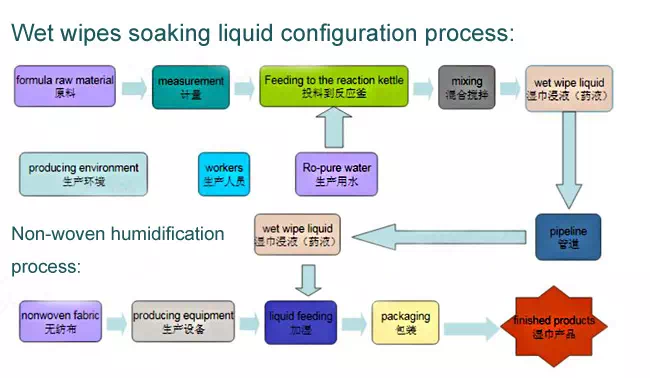What are the raw materials for making wet wipes?
Wet wipes have become a ubiquitous household item, offering convenience for quick cleaning and refreshing. However, the process of making these handy wipes involves a careful selection of raw materials to ensure effectiveness, safety, and comfort for users.
Fabric: At the core of every wet wipe is the fabric. Typically made of non-woven materials such as cotton, rayon, polyester, or a blend of these, the fabric provides the structure and absorbency needed for the wipes to function effectively.
Preservatives: To prevent the growth of harmful bacteria and mold, preservatives like methylparaben and propylparaben are often added to the wet wipe solution. These ingredients help maintain the integrity of the wipes over time.

Moisturizing Agents: Ingredients such as glycerin and aloe vera are commonly included in wet wipes to keep the skin hydrated and prevent dryness. These moisturizing agents contribute to the overall comfort and skin-friendly nature of the wipes.
Cleansing Agents: Surfactants like sodium lauryl sulfate are essential for cleaning the skin surface by effectively removing dirt and oils. These cleansing agents ensure that the wipes can efficiently carry out their intended cleaning function.
Fragrance: Many wet wipes come with added fragrances to provide a pleasant scent during use. Synthetic fragrances are commonly used to enhance the sensory experience of using the wipes.
Emollients: Emollients like mineral oil and dimethicone are incorporated into wet wipes to help soften and smooth the skin. These ingredients contribute to the overall skin-nurturing properties of the wipes.
Humectants: Humectants such as propylene glycol and butylene glycol play a crucial role in retaining moisture within the wipes. By helping to keep the wipes moist, humectants ensure that the wipes remain effective and comfortable to use.
Water: Water serves as the primary ingredient in wet wipes, acting as a carrier for other components and ensuring that the wipes are adequately moist for use. The quality of water used in wet wipes production is essential for maintaining the safety and effectiveness of the product.
In conclusion, the production of wet wipes involves a careful selection and combination of raw materials to create a product that is effective, safe, and comfortable for consumers. Understanding the role of each ingredient can provide insights into the quality and functionality of these everyday essentials.

